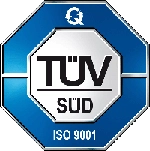If you’ve been considering moving to Rome lately, then have a look at our brief guide on how to move there and why the it may be the perfect match for you. Rome is the capital city of Italy and is also the capital of Lazio region, as the most populous metropolitan city in Italy, with almost 4.4 million residents. The Eternal City has a typical Mediterranean climate, with rainy winter and warm summer. During summer, months temperatures go from below 20°C at night to 30°C or more during the day.
Which documents do I need to move to Rome?
When entering Italy as a EU national, the only requirement to fulfill is to apply for a Fiscal Code (Codice Fiscale). When moving to Italt for more than 12 months, you also need to enrol to the Town Hall and receive your residency certificate.
On the other hand, a non-EU national need a visa to enter the country. Based on the purpose of your stay, you might need a specific type of Visa.
Either case, Arletti & Partners can help you in local residence registration, find the right Italian Visa and comply with fulfillments once you arrive in Italy.
After entering Italy, you have 8 days to register your presence at Questura- Polizia di Stato or Prefettura.
Finding a home in Rome
Rome is divided into 15 “municipi”, with different renting costs. Be aware that the monthly rent will be your biggest expenditure. Also, the Coronavirus pandemic had a strong impact on Rome’s rental prices:
| Accomodation Type | Average Price |
| Rooms | €525 |
| Studios | €772 |
| 1-bedroom apartment | €1.060 |
| 3-bedroom apartment | €2.500 |
Youngsters may prefer Trastevere as the ideal part of Rome, with its international students population. Still, if you are looking for a quieter area, you might prefer the Cassia Flaminia, as a more residential areas, or the Appia Antica, with its amazing villas.
If you are a student or a young expat, a preferred and cheaper option is to rent a room in Piazza Bologna or Verano.
Other cost of living in Rome vary from €200 to €300 per month for groceries, about €120 per week for going out for lunch and about €80 euros for going out for a beer 4 times per week.
Transportation in Rome
Rome has a robust public transport system! The easiest way to move through Rome is by taking the metro, which consists of three lines: A, B and C. The tram is also a good and cheap option, and is not affected by traffic, with its 6 lines. Rome Bus public transport is run by ATAC.
Transportation tickets prices vary as it follows:
| Transport Type | Price |
| One way ticket | €1,75 |
| Monthly pass | €35 |
| Annual pass | €250 |
| Taxi fee for 1km | €1,30 |
Every big city has its standard rules to move safely using public transport: unfortunately, Rome is no exception. Watch yourself from pickpocketers!
Healthcare assistance in Rome
The Roman public healthcare system is ranked as the second best in Italy, providing very efficient services to its citizens. All expats with valid visas, valid stay permits or residence certificates can access the public health system (Servizio Sanitario Regionale).
Expats working in Rome are also eligible to access the public healthcare.
There are eight health offices (ASL) in Rome: you need to find the closest to your address and the requested documents to finalize your enrolment. Obvsiously, Arletti&Partners can support you with collecting the documents and finalize the enrolment.
Another good option for expats is to refer to private clinics, as there are three Private hospitals in Rome that are considered top hospitals in the entire country:
- European Hospital, located at Via Portuense 700;
- Aurelia Hospital, located at Via Aurelia 860;
- Bambino Gesu’ Hospital, At Piazza S. Onofrio 4.
Art and History in Rome
People can spend a lifetime looking at and enjoying Rome’s infinite collections of arts and museums. The most popular places to visit are: the Vatican Museums, the Colosseum, magical squares like Piazza Navona where you can enjoy the magnificent art of Bernini, and so on.
Moreover, as an expat you can’t miss a visit at Galleria Borghese, with one of the most exclusive art collections ever, the collection of Borghese family, which includes sculptures of Bernini: “Apollo and Daphne”, “the Abduction of Proserpina”. Also, here you can look at art pieces from Tiziano and Caravaggio.
Other amazing places you can’t miss are: Doria Pamphilj Palace, Palazzo Barberini and the National Gallery of Modern Art.
A taste of Rome
Food in Rome is mostly made of “popular” dishes, composed of very simple ingredients: pasta with eggs and meat, cheese, pepper, tomato sauce. You can’t miss a Carbonara pasta or a Cacio e Pepe, the most iconic pasta dishes, with the traditional Pecorino cheese, a salty and aged sheep’s cheese. Other tarditional foods in Rome are: artichokes with oil and herbs, or “Carciofi alla Giudia” (Jewish style fried artichokes), Allesso di Bollito (beef), meatballs with tomato sauce, ice-cream and Maritozzi, a pastry filled-in with whipped cream: the Rome go-to breakfast.
If you are looking for further information about the whole relocation process to Italy or interested in other Italian cities, have a look at our dedicated web page about moving to Italy from abroad.



















